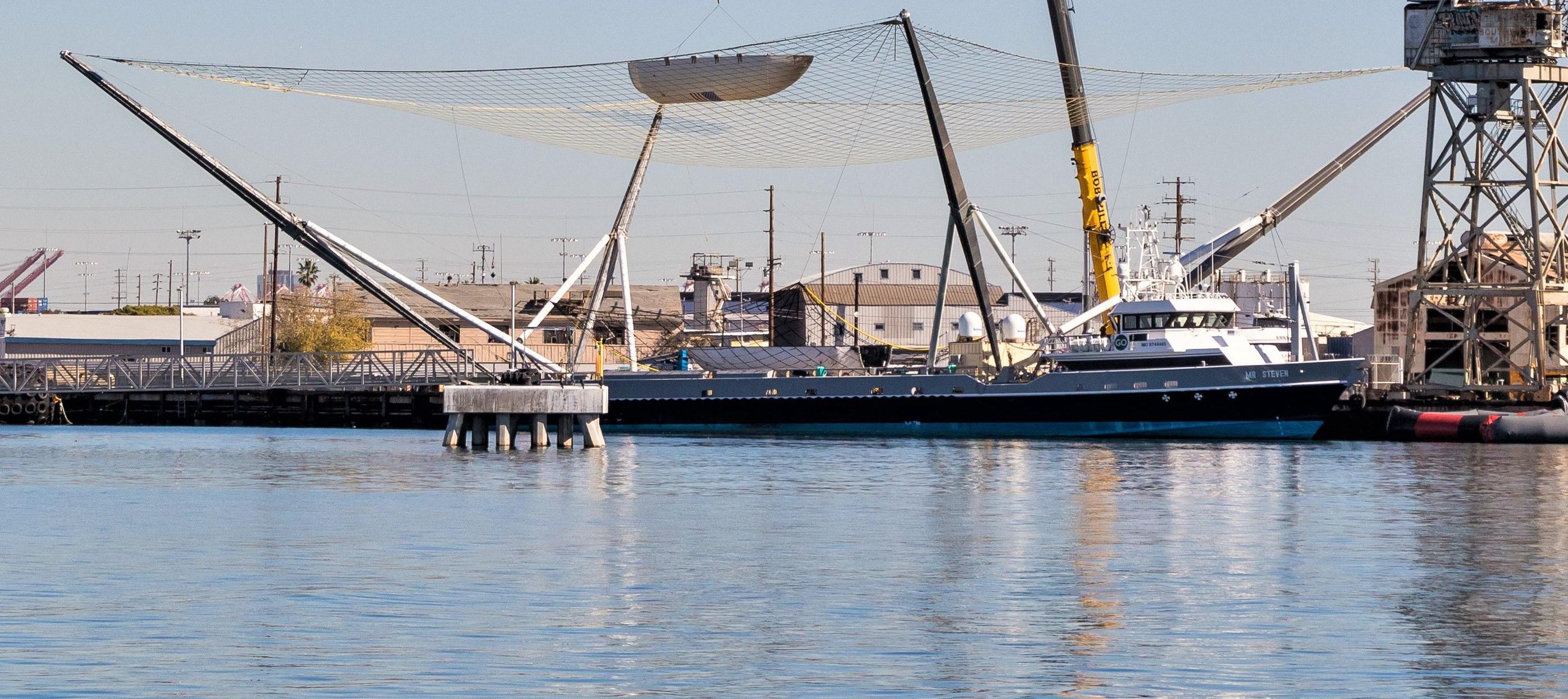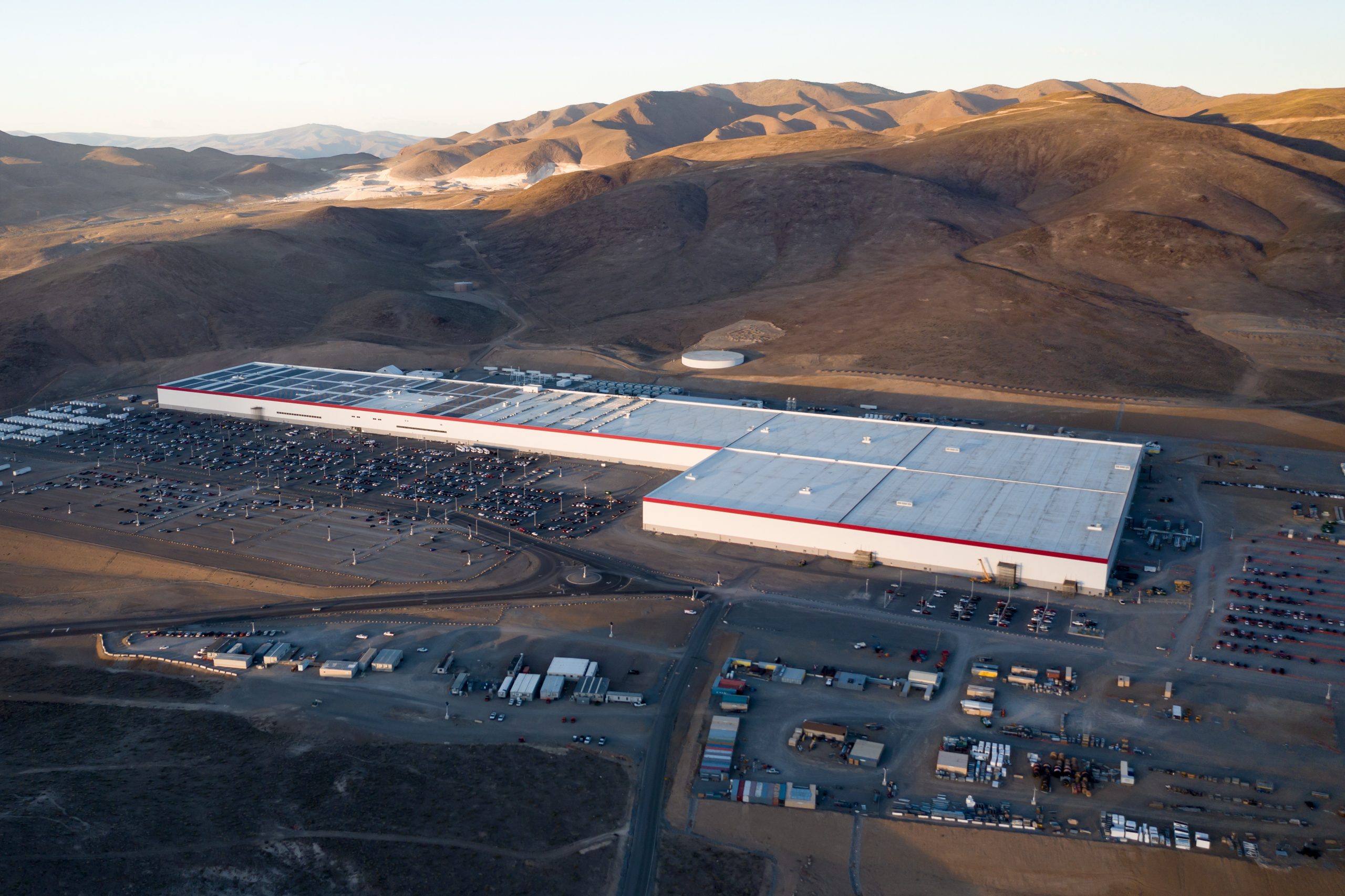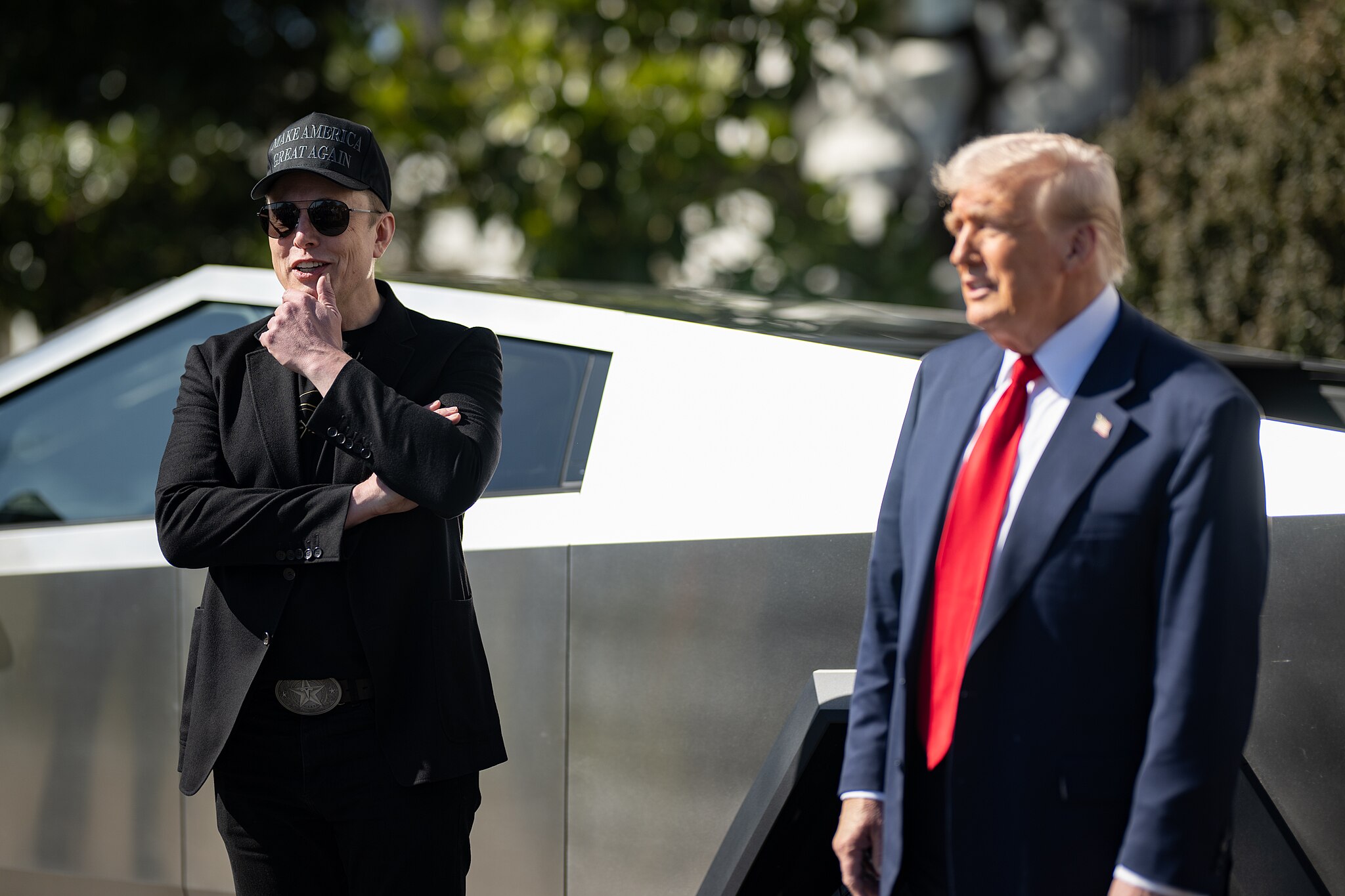

News
SpaceX isn’t giving up on catching rocket fairings, boat spotted with new net
SpaceX fairing recovery vessel Mr. Steven was spotted in Port of San Pedro on January 22nd performing tests with two fairings in its net, hinting at the challenging logistics of safely recovering both Falcon 9 fairing halves with one ship.
Although SpaceX engineers and technicians have yet to catch a parasailing Falcon 9 fairing (let alone two) after an actual operational launch, a series of controlled fairing drop tests – using a barge and a helicopter – have brought Mr. Steven agonizingly close to success, evidenced by an official video published by SpaceX earlier this month.
Two fairing halves, each in a separate net aboard Mr Steven this morning. #spacex pic.twitter.com/beYSFQwcYr
— Pauline Acalin (@w00ki33) January 23, 2019
Teslarati photographer Pauline Acalin managed to make it to Berth 240 in time to capture one section of SpaceX’s fairing recovery testing, in which Mr. Steven was loaded with two fairings, one on the large main net (the passive half) and one (the active half) atop a much smaller net slack on the vessel’s deck. By asymmetrically actuating each net’s separate electric motors, recovery technicians appear to be able to control fairing half orientation and shift their position in the net. It’s unclear how exactly Mr. Steven’s main (top) and secondary (bottom) nets are meant to interface insofar as it does not appear physically possible for a fairing half in the top net to make its way to the bottom net without the intervention of dockside cranes.
Perhaps more importantly, local photographer Jack Beyer was able to observe additional activities just prior to Pauline’s arrival, capturing what looked like a weighted parachute drop test onto either Mr. Steven’s net or the concrete docks beside the vessel.
So far they’ve placed one fairing half in the top net with another in the bottom, and done at least one drop test of a weight with a parachute. ? pic.twitter.com/MkWb9l9lqz
— Jack Beyer (@thejackbeyer) January 22, 2019
The goal of that parachute/weight drop test is entirely opaque. Regardless, Tuesday’s tests do seem to indicate that SpaceX is thinking about recovering both post-launch Falcon fairing halves with a single Mr. Steven, a capability upgrade that would make the incomplete challenge of catching fairings even more difficult. Assuming both fairing halves deploy their parafoils at roughly the same time, it might be possible for the autonomous parafoils to modify trajectories in such a way that a gap of seconds or even minutes could be created between both planned splashdowns, offering Mr. Steven a minute or two to free its net of the first captured half before gently catching the second.
Despite the fact that SpaceX has not yet had operational success in the ~12 months recovery engineers and technicians have been working with Mr. Steven, tests like those performed on Tuesday have continued to reliably occur. If anything, the fact that experiments with dual-fairing recovery operations are still on the table is an encouraging indication that fairing recovery and reuse – particularly with Mr. Steven in the loop – are still a priority at SpaceX, while also suggesting that the company’s engineers and technicians are extremely confident that repeatable success is just a matter of refinement.

This should not come as a much of a surprise given that Falcon 9 began propulsive soft landing attempts in September 2013, 27 months before the company’s first successful Falcon 9 booster recovery. Nevertheless, SpaceX attempted its first actual landing aboard a drone ship in January 2015, separating the first attempt from the first successful landing by just less than 12 months. Fairing recovery is clearly an entirely different beast but the gist of this analogy remains true regardless – SpaceX’s brilliant engineers and technicians are unlikely to give up until a given problem is solved or their efforts are redirected elsewhere as company priorities shift.
Recent fairing recovery test with Mr. Steven. So close! pic.twitter.com/DFSCfBnM0Y
— SpaceX (@SpaceX) January 8, 2019
Berth 240’s uncertain future
In the meantime, SpaceX may soon have to move Mr. Steven’s Port of San Pedro operations elsewhere according to a report from the LA Times that the company plans to “terminate [its] Terminal Island lease agreement.” SpaceX was unable to offer further insight beyond a statement provided about the future of BFR’s manufacturing, initially planned to occur at a dedicated factory that would have been built at Berth 240, which has also acted as Mr. Steven’s home for the last eight months.
Given the lack of official insight into the proceedings, it’s ambiguous if the terminated lease will be modified to allow for Mr. Steven to continue operating out of Berth 240. Prior to moving to Berth 240, SpaceX stationed Mr. Steven at Berth 52, home of drone ship Just Read The Instructions (JRTI) and support vessel NRC Quest. Space is already tight at that site, however, making it a suboptimal replacement for Berth 240.
While I feel crushed about #SpaceX pulling the #SuperHeavy out of the @PortofLA, I feel confident that other innovators will see the huge value they get in San Pedro. (1/2)
— Joe Buscaino (@JoeBuscaino) January 16, 2019
SpaceX signed its Berth 240 lease near the end of March 2018 and would have reached the first anniversary of its prospective BFR factory around two months from now. For now, only SpaceX seems to know where Mr. Steven’s operations and the first BFR (Starship/Super Heavy) production will ultimately be located.
Elon Musk
Tesla reveals it is using AI to make factories more sustainable: here’s how
Tesla is using AI in its Gigafactory Nevada factory to improve HVAC efficiency.

Tesla has revealed in its Extended Impact Report for 2024 that it is using Artificial Intelligence (AI) to enable its factories to be more sustainable. One example it used was its achievement of managing “the majority of the HVAC infrastructure at Gigafactory Nevada is now AI-controlled” last year.
In a commitment to becoming more efficient and making its production as eco-friendly as possible, Tesla has been working for years to find solutions to reduce energy consumption in its factories.
For example, in 2023, Tesla implemented optimization controls in the plastics and paint shops located at Gigafactory Texas, which increased the efficiency of natural gas consumption. Tesla plans to phase out natural gas use across its factories eventually, but for now, it prioritizes work to reduce emissions from that energy source specifically.
It also uses Hygrometric Control Logic for Air Handling Units at Giafactory Berlin, resulting in 17,000 MWh in energy savings each year. At Gigafactory Nevada, Tesla saves 9.5 GWh of energy through the use of N-Methylpyrrolidone refineries when extracting critical raw material.
Perhaps the most interesting way Tesla is conserving energy is through the use of AI at Gigafactory Nevada, as it describes its use of AI to reduce energy demand:
“In 2023, AI Control for HVAC was expanded from Nevada and Texas to now include our Berlin-Brandenburg and Fremont factories. AI Control policy enables HVAC systems within each factory to work together to process sensor data, model factory dynamics, and apply control actions that safely minimize the energy required to support production. In 2024, this system achieved two milestones: the majority of HVAC infrastructure at Gigafactory Nevada is now AI-controlled, reducing fan and thermal energy demand; and the AI algorithm was extended to manage entire chiller plants, creating a closed-loop control system that optimizes both chilled water consumption and the energy required for its generation, all while maintaining factory conditions.”
Tesla utilizes AI Control “primarily on systems that heat or cool critical factory production spaces and equipment.” AI Control communicates with the preexisting standard control logic of each system, and any issues can be resolved by quickly reverting back to standard control. There were none in 2024.
Tesla says that it is utilizing AI to drive impact at its factories, and it has proven to be a valuable tool in reducing energy consumption at one of its facilities.
Elon Musk
Tesla analysts believe Musk and Trump feud will pass
Tesla CEO Elon Musk and U.S. President Donald Trump’s feud shall pass, several bulls say.

Tesla analysts are breaking down the current feud between CEO Elon Musk and U.S. President Donald Trump, as the two continue to disagree on the “Big Beautiful Bill” and its impact on the country’s national debt.
Musk, who headed the Department of Government Efficiency (DOGE) under the Trump Administration, left his post in May. Soon thereafter, he and President Trump entered a very public and verbal disagreement, where things turned sour. They reconciled to an extent, and things seemed to be in the past.
However, the second disagreement between the two started on Monday, as Musk continued to push back on the “Big Beautiful Bill” that the Trump administration is attempting to sign into law. It would, by Musk’s estimation, increase spending and reverse the work DOGE did to trim the deficit.
Every member of Congress who campaigned on reducing government spending and then immediately voted for the biggest debt increase in history should hang their head in shame!
And they will lose their primary next year if it is the last thing I do on this Earth.
— Elon Musk (@elonmusk) June 30, 2025
President Trump has hinted that DOGE could be “the monster” that “eats Elon,” threatening to end the subsidies that SpaceX and Tesla receive. Musk has not been opposed to ending government subsidies for companies, including his own, as long as they are all abolished.
How Tesla could benefit from the ‘Big Beautiful Bill’ that axes EV subsidies
Despite this contentious back-and-forth between the two, analysts are sharing their opinions now, and a few of the more bullish Tesla observers are convinced that this feud will pass, Trump and Musk will resolve their differences as they have before, and things will return to normal.
ARK Invest’s Cathie Wood said this morning that the feud between Musk and Trump is another example of “this too shall pass:”
BREAKING: CATHIE WOOD SAYS — ELON AND TRUMP FEUD “WILL PASS” 👀 $TSLA
She remains bullish ! pic.twitter.com/w5rW2gfCkx
— TheSonOfWalkley (@TheSonOfWalkley) July 1, 2025
Additionally, Wedbush’s Dan Ives, in a note to investors this morning, said that the situation “will settle:”
“We believe this situation will settle and at the end of the day Musk needs Trump and Trump needs Musk given the AI Arms Race going on between the US and China. The jabs between Musk and Trump will continue as the Budget rolls through Congress but Tesla investors want Musk to focus on driving Tesla and stop this political angle…which has turned into a life of its own in a roller coaster ride since the November elections.”
Tesla shares are down about 5 percent at 3:10 p.m. on the East Coast.
Elon Musk
Tesla scrambles after Musk sidekick exit, CEO takes over sales
Tesla CEO Elon Musk is reportedly overseeing sales in North America and Europe, Bloomberg reports.

Tesla scrambled its executives around following the exit of CEO Elon Musk’s sidekick last week, Omead Afshar. Afshar was relieved of his duties as Head of Sales for both North America and Europe.
Bloomberg is reporting that Musk is now overseeing both regions for sales, according to sources familiar with the matter. Afshar left the company last week, likely due to slow sales in both markets, ending a seven-year term with the electric automaker.
Tesla’s Omead Afshar, known as Elon Musk’s right-hand man, leaves company: reports
Afshar was promoted to the role late last year as Musk was becoming more involved in the road to the White House with President Donald Trump.
Afshar, whose LinkedIn account stated he was working within the “Office of the CEO,” was known as Musk’s right-hand man for years.
Additionally, Tom Zhu, currently the Senior Vice President of Automotive at Tesla, will oversee sales in Asia, according to the report.
It is a scramble by Tesla to get the company’s proven executives over the pain points the automaker has found halfway through the year. Sales are looking to be close to the 1.8 million vehicles the company delivered in both of the past two years.
Tesla is pivoting to pay more attention to the struggling automotive sales that it has felt over the past six months. Although it is still performing well and is the best-selling EV maker by a long way, it is struggling to find growth despite redesigning its vehicles and launching new tech and improvements within them.
The company is also looking to focus more on its deployment of autonomous tech, especially as it recently launched its Robotaxi platform in Austin just over a week ago.
However, while this is the long-term catalyst for Tesla, sales still need some work, and it appears the company’s strategy is to put its biggest guns on its biggest problems.
-

 Elon Musk1 day ago
Elon Musk1 day agoTesla investors will be shocked by Jim Cramer’s latest assessment
-

 News6 days ago
News6 days agoTesla Robotaxi’s biggest challenge seems to be this one thing
-

 News2 weeks ago
News2 weeks agoTesla’s Grok integration will be more realistic with this cool feature
-

 Elon Musk2 weeks ago
Elon Musk2 weeks agoElon Musk slams Bloomberg’s shocking xAI cash burn claims
-

 News2 weeks ago
News2 weeks agoTesla China roars back with highest vehicle registrations this Q2 so far
-

 News2 weeks ago
News2 weeks agoTexas lawmakers urge Tesla to delay Austin robotaxi launch to September
-

 News2 weeks ago
News2 weeks agoTesla dominates Cars.com’s Made in America Index with clean sweep
-

 Elon Musk1 week ago
Elon Musk1 week agoFirst Look at Tesla’s Robotaxi App: features, design, and more




















